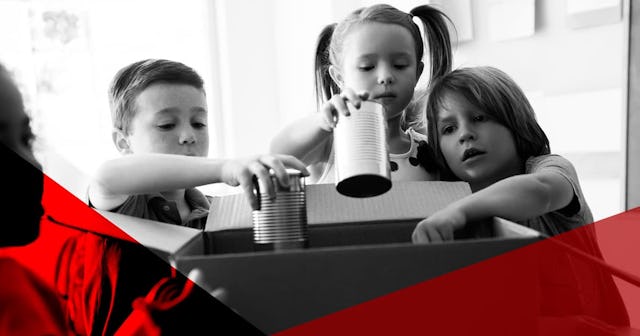Why We Shouldn't Give 'Prizes' For Classroom Donations

Philanthropy: The desire to promote the welfare of others, expressed especially by the generous donation of money to good causes.
During the holiday season, the idea of philanthropy is moved to the forefront of our culture. We begin to hear about coat drives for the kiddos in need, you see bell ringers standing outside stores, and you’re asked to participate in canned food drives.
I pride myself in being honest and authentic, because those are core values that are important to me. I am a lower middle-class, single-income mom of a seven-year-old daughter who attends elementary school in my city’s public school system. I work for a local nonprofit organization, which means that my take-home pay isn’t much — but what I lack in income, I make up for in knowledge that what I do every day makes a difference for many people that are far worse off than me.
After one particularly long day, I climbed into my warm bed, ready to read books to my daughter (one of my favorite parts of the day). I felt my tense body start to relax as I took some much needed deep breaths. The time change had really taken a toll on my spirits, and the early darkness was really making me struggle to find a shred of joy in my prized evening time with my kiddo. It was then that she climbed into bed with me and casually mentioned, “Oh, I need to bring 25 canned goods into school tomorrow for a food drive.”
My body tensed once again and my eyes about popped out of my head. “What?!” my panicked voice asked. “Twenty five? Are you sure?” She was sure. She said five cans meant one clip-up, ten cans meant two clips up, and so on; but 25 meant an automatic clip-up to the principal.
If you aren’t familiar with clip-ups, allow me to enlighten you. Clip charts are a class management system, designed to help students manage their own behavior by seeing their name move up or down the chart throughout the day based on their behavior. Aside from the recent research that shows that these systems can cause embarrassment and anxiety in children that can impact their ability to learn, not to mention the children that don’t have the skills to “fix” their behavior, now the system is being used as an incentive to bring in non-perishable items to move up on the behavior chart, closer to clipping all the way up to the principal’s office where they will be rewarded with candy.
Klaus Vedfelt/Getty
Switch back to my wide-eyed daughter, who already comes home many days and tells me that she had a bad day because she was on a less-than-desirable color on the clip chart, and is now telling me that I need to send in 25 non-perishable items with her tomorrow so she can clip up to the principal.
Are we teaching our children they need to be on good behavior to clip up and be rewarded with candy? Are we teaching them that they need to bring in non-perishable items for people that are less fortunate than them? Or are we teaching the less fortunate in those classrooms that they aren’t worth clip-ups because they don’t have the means to bring in non-perishable items?
What upsets me most about this incentive is that it’s a missed opportunity to teach children about philanthropy. Rewarding kids with clip-ups for donations is teaching them that you should give to receive a personal benefit; that the giving is about them. My daughter is now so focused on the clip-up that she cannot see why it is important to bring in food items.
Of course, we all enjoy receiving a benefit for our generosity. That’s a common practice, and any nonprofit (my employer included) will tell you that recognition is one of the aspects of our business that is most important to our donors. But, most of us are giving that initial gift not to get the reward, but because we believe in the cause to which we’re giving. We already feel there’s an intrinsic value to our charity. This is exactly why I choose to do the work I do every day. Teaching kids this lesson early will help them become better members of our communities and eliminate the need for rewards in the long-run.
What if, instead of teaching our youth they should give because they will get a reward that not everyone will get, we teach them that they should give because it’s the right thing to do? Not because you get a clip-up, but because there are others in our community that need help. When you help others, the benefit is not only that it makes you feel good, but that you are giving to a good cause, the people of our community.
After all, what is our community without its people?
This article was originally published on